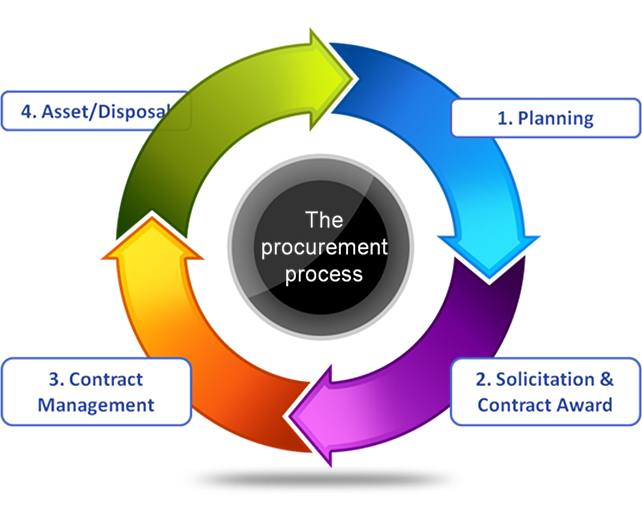The contract procurement process encompasses the steps that a company follows when acquiring services or goods.

The contract procurement process encompasses the steps that a company follows when acquiring services or goods. The process begins when corporate executives identify a business need that must be met and concludes when the contract is granted and signed. When purchasing goods or services, good stewardship of company and public monies should be maintained.
Many projects are successful or unsuccessful dependent on the performance of their suppliers in collaboration with the project team. This emphasises the need of properly managing suppliers and procurement to ensure that all deliverables satisfy your objectives and expectations.
Table of Contents
The Goal of Procurement
With an established procurement process in place, your company will be able to manage supplier relationships and maintain a high level of service and value. You’ll have a more efficient way of ordering, receiving, authorising, and paying for item delivery.
Ideally, you should be able to apply the same basic approach every time you buy items or services for your organisation. This will enable you to deal with problems as they emerge. The following are the objectives of an effective procurement management process:
Identifying suitable items and services.
Making and sending purchase orders.
Assuring on-time delivery.
Payment approval.
Setting and fulfilling supplier contract milestones.
Resolving product delivery difficulties.
Issues are communicated among members of the management team.
Contracts are being audited to ensure that they are being fulfilled properly.
The Procurement Process Steps
Having set procedures in place will help your management team’s procurement objectives.
External or internal sources shed light on the need for a new product or service in your company. This might be a brand-new item or a reorder of something you already bought.
Determine the precise characteristics and specifications of the product or service you want. This may be determined by the standards imposed by your industry. Include particular item or product numbers, as well as identifiers such as size and colour, when available.
Consult your company’s authorised vendor list to see whether the product you want is available from those providers. If not, you may need to do online or in-person research on the goods to compile a list of probable providers for that item.
Compare at least three suppliers’ options to discover the best possible payment terms and pricing.
Create a buy order that specifies the precise things to be bought as well as the terms and conditions of the transaction, including the price. The purchase order should be signed by all parties and a copy should be kept on file.
If the delivery of the acquired goods or service is time-sensitive, the purchase order should contain parameters for expedited delivery. List deadlines for task completion, delivery dates, and payment dates clearly.
When goods are delivered, you have the option of accepting them and paying for them, or rejecting them if they do not satisfy the requirements of the purchase order.
Compare the invoice to the purchase order and receipt. Before making a payment, be sure that any concerns have been resolved.
Keep records of all purchases in case you are audited by the IRS. This is also necessary so you have warranty information and may refer to past purchases the next time you have a comparable procurement requirement.
Procurement by the Government
Additional processes may be necessary for public procurement, which generally includes contract administration (another term for contract management). In some businesses, procurement concludes when the contract is granted, and administration/management is handled separately. Regardless of this division, contract administration is equally as essential as procurement since it has a significant influence on supplier relationships.
The following steps are involved in public procurement:
Defining requirements
Choosing a procurement approach.
Strategic planning is under progress.
Taking care of requisitions.
Creating and disseminating solicitation materials.
Visiting places.
Organizing pre-bid proposal meetings
Bids are processed and evaluated.
Making award nominations.
Contract negotiations
Contract awarding and signing
Copy and paste this <iframe> into your site. It renders a lightweight card.
Preview loads from ?cta_embed=1 on this post.